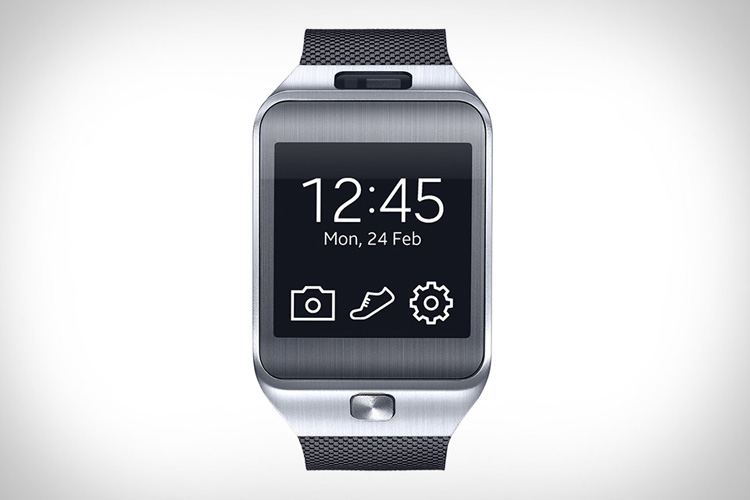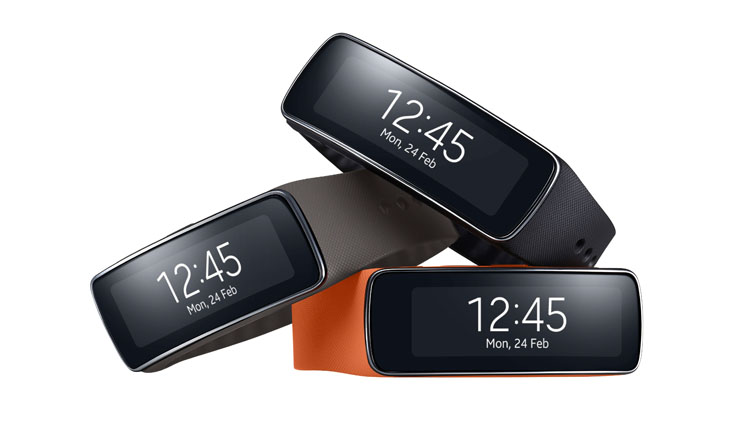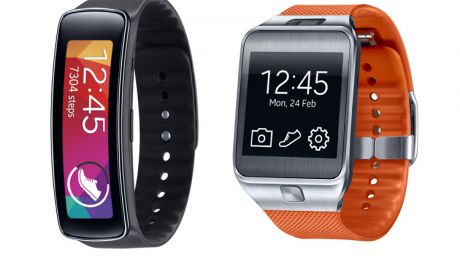You can trust Coach
The Galaxy Gear, Samsung’s first try at wearable technology, was launched in 2013 but the high price, limited phone support and terrible battery life meant it struggled to find many supporters. The company is now back with two replacements, Gear 2 and Gear Fit, which aim to fix the mistakes of their predecessor and add a new fitness focus.
The Gear 2 and Gear Fit have a near identical set of features but come in different forms. The Gear 2 is more traditional and looks like a watch, albeit one with a touchscreen rather than a watch face; the Gear Fit is more like an exercise band, although it still has an LED display.
By themselves, the Gear 2 and Gear Fit aren’t capable of very much at all. You have to pair them with a smartphone in order to use any of their features, including telling the time – and that means a Samsung smartphone, because they aren’t compatible with phones from other manufacturers, and even then only a small selection of around 20 Samsung handsets are compatible. Once connected using Bluetooth, however, they become a lot more useful.
Gear 2
If you prefer a watch to a fitness band, the Gear 2 has a brushed-metal finish that’s fairly stylish. Although it may not look quite as good as a similarly priced chronograph, it does have almost everything you could want from a smartwatch including notifications from a paired smartphone, music playback controls, an IR blaster for controlling a TV, voice memo abilities, and even a built-in microphone and speaker for making hands-free calls.
The 44mm display is extremely bright – so much so you’ll need to take it off when driving at night. An accelerometer inside knows when you raise your wrist and turns the screen on automatically, but turning the steering wheel would also be enough to trigger it accidentally. It’s certainly easy to read in any light.

There’s only a single button, with almost everything being controlled by taps and swipes on the screen. The button wakes up and turns off the screen, and can also be used as a double-tap shortcut to jump straight into a particular function. We used it to jump straight into music control, letting us change tracks without fishing our phone out of a pocket.
The Gear 2 also has a built-in camera, although the pictures it takes are grainy and lack detail – and considering you need a smartphone to use the watch you’ll have a better camera in your pocket anyway. The Gear 2 Neo is a slightly cheaper alternative that does away with the camera and metal finish for around £50 less.
Gear fit
A chunky watch isn’t the most convenient piece of wrist wear when exercising, which is where the Gear Fit comes in. The longer, thinner display is curved to better match the contours of your wrist, and takes up much less room than the Gear 2. The interface has been tweaked to suit the different display shape, but many of the same features are carried across from the Gear 2 including music control and notifications. Unfortunately the vertical display makes it tricky to read incoming email or text notifications – you have to turn your wrist uncomfortably or read emails a few characters at a time.
Fitness focus
There are plenty of smartwatches that are capable of the features mentioned above, but where the Gear 2 and Gear Fit stand out is their fitness focus. With integrated pedometers and optical heart rate sensors, which measure your pulse using a highly focused beam of light, either gadget can track your daily exercise patterns. They are both IP67 water- and dust-resistant, so getting caught in the rain won’t cause problems, and use hypo-allergenic rubberised wrist straps to avoid skin irritation.

Both gadgets can track exercise using the pre-programmed walking, running, cycling and hiking modes. The running mode works with a treadmill, but you can’t use the cycling mode on an exercise bike – it relies on the GPS data from a paired smartphone to track speed and distance travelled.
S health
Samsung’s fitness hub S Health comes installed on most Galaxy smartphones, and synchronises directly with the Gear 2 and Gear Fit. It records your daily step totals and exercise sessions automatically, and you can manually add calories consumed and weight.
S Health should soon be opened up to third-party developers, so you’ll be able to send data from a Gear wearable to big-name fitness apps like RunKeeper, MapMyRun and Endomondo instead of relying entirely on S Health. This is a great move by Samsung, because S Health itself is rather basic – the Gear 2 and Gear Fit only monitor your heart rate once a minute when in exercise mode, so there are no in-depth performance graphs.
The route mapping feature is hit-and-miss, often saving the correct distance but losing half the route when you go to check after a run. You can’t manually edit the data once you get home, either.
Battery life
Both devices have dedicated charging cradles, which plug into a standard microUSB port. Although handy for carrying around with you, should you misplace the cradle you won’t be able to charge your device when it inevitably runs out of power. Samsung has improved battery life significantly over the original Galaxy Gear, so you should be able to last up to four days on a single charge with either device, although this drops to around two days if you frequently use the exercise tracking functions.
Verdict
If you don’t already have a fitness tracker or smartwatch, and own a compatible Samsung smartphone, the Gear 2 and Gear Fit are about as fully-featured as it’s possible to get from wearable technology today. Neither one is perfect, though, and the fitness features – while welcome – are too basic to replace a dedicated exercise monitor.
Score: 7/10
Price: £250/£300
Manufacturer: Samsung

